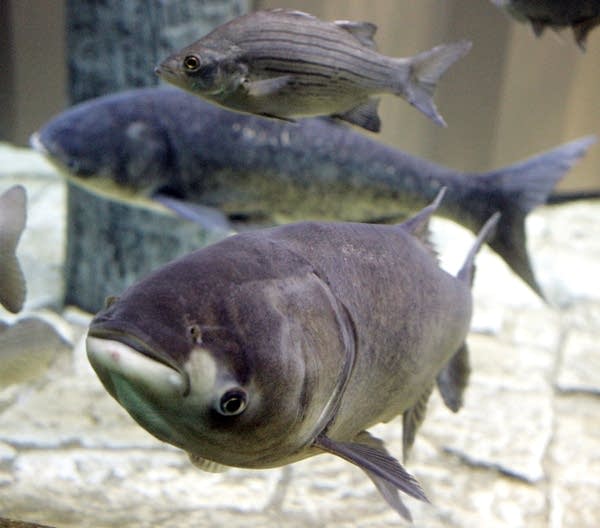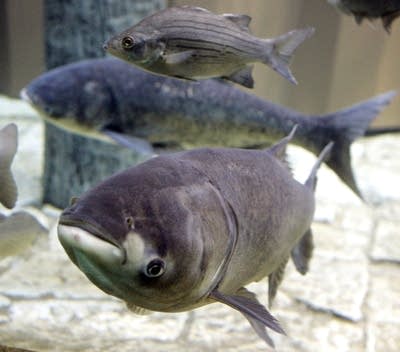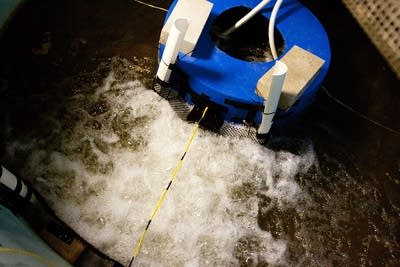Legislators, state officials debate strategy against invasive carp

The Department of Natural Resources ran into rough waters Tuesday when officials presented their plan to slow the spread of Asian carp in the Mississippi River.
Legislators and state officials continue to debate the best way to slow the spread of the invasive Asian carp. The DNR is recommending a combination of bubbles, noise, and light at Lock and Dam No. 1, also known as the Ford Dam.
Bubblers are considered less effective than electric barriers but the U.S. Army Corps of Engineers, which operates the lock, has been clear it would not approve an electric barrier for safety reasons, DNR officials said.
Steve Hirsch, director of the DNR's Ecological Resources and Waters Division says the U.S. Army Corps of Engineers,
Create a More Connected Minnesota
MPR News is your trusted resource for the news you need. With your support, MPR News brings accessible, courageous journalism and authentic conversation to everyone - free of paywalls and barriers. Your gift makes a difference.

"We can say, 'OK, we'll try it anyway, we'll spend a million dollars on the design when we know pretty well the answer's going to be no'" Hirsch said. "Or we can say 'let's take a look at what our next best alternative and see if that can be approved.'"
Some members of the House Environment Policy Committee strongly objected to the idea of a bubble, sound, and light array. They said it wouldn't be nearly as effective as an electric barrier.
Committee chairman Rep. David Dill, DFL-Crane Lake, said he wants the most effective barrier possible.
"We're going to get in the engineers, get around a table and find out why their claims are different and try and flesh it out to the best of our ability," Dill said. "At some point we'll probably end up telling the department what they're going to do."
Any type of barrier would need to be considered experimental because there are no comparable sites with barriers operating, according to the DNR.
A review by the Army Corps will take at least six months, the DNR said.
• Follow Stephanie Hemphill on Twitter: http://www.twitter.com/mpr_hemphill

